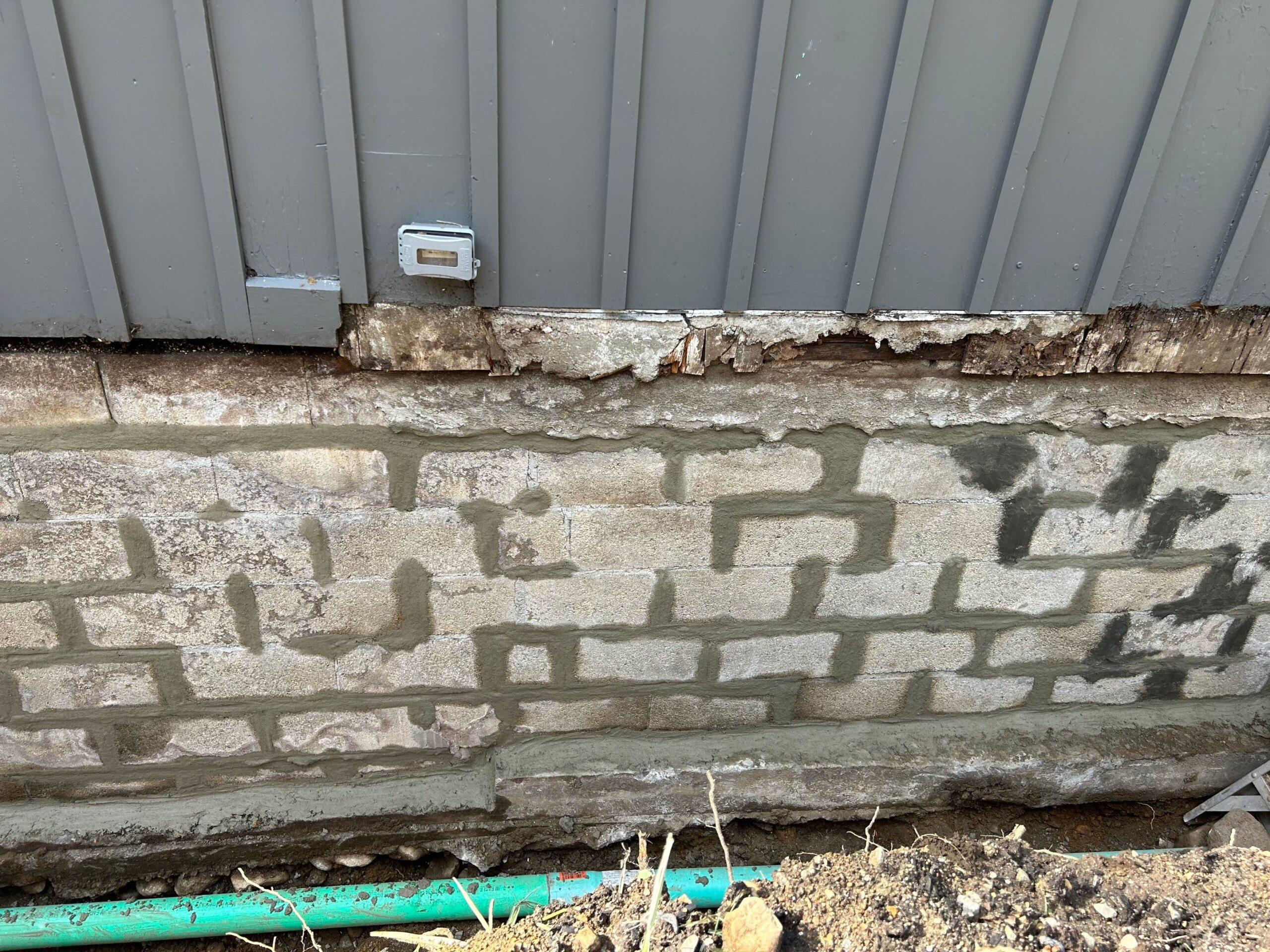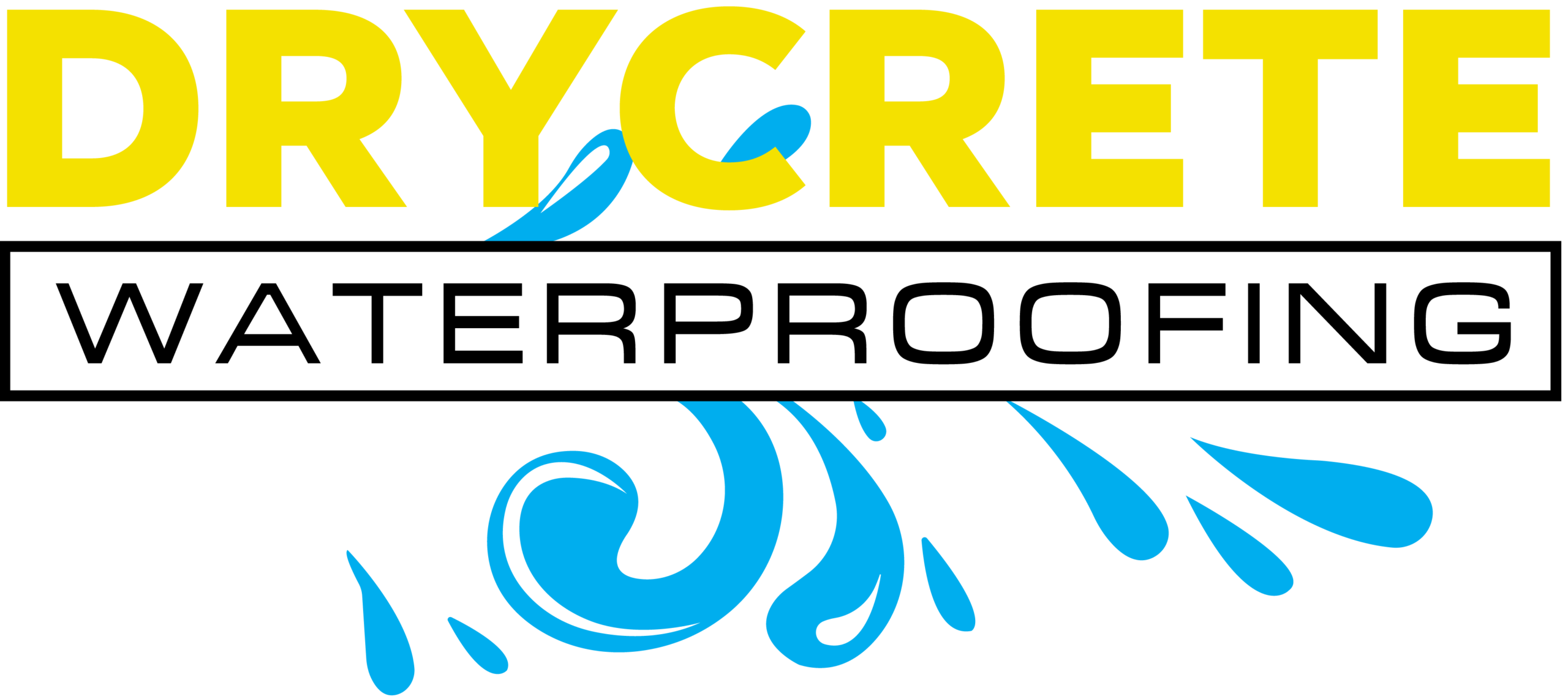When you’re considering your next building project, it’s always best to start on a strong foundation of knowledge, if you’ll forgive the pun. So today we’re going to discuss the advantages of poured concrete as a material for your basement walls.
What is a poured Concrete Wall?
A poured concrete wall is exactly what it sounds like. Liquid concrete is poured into your foundations, shaped by a mold, and becomes your new basement wall. The result is a foundation that can be any size or shape and holds up remarkably well under pressure from above and the sides and is easy to maintain in the long-run.
5 Reasons why they are better (than block):
Of course, poured concrete isn’t the only option for your foundation. Other commonly used options include cinderblock or fieldstone, both of which have their advocates (and for good reasons), however we genuinely do believe that poured concrete is usually the best choice for any foundation. Here’s 5 reasons why:
1. Durability and Strength

When it comes to longevity, poured concrete is hard to beat and longevity is exactly what you’re looking for in your foundations.
Block foundations, such as those built with cinderblocks or fieldstone, can take a great deal of weight from above (known as “compression strength”), but because they’re made from dozens of individual blocks joined together with mortar, they can suffer from lateral pressure caused by the surrounding soil and groundwater.
This can lead to buckling, bowing and even, if not maintained properly, collapse. Under enough lateral pressure, every joint (and there will be a lot of them) becomes a potential source of dampness in your new building.
There is also the issue of on-going maintenance. Mortar will eventually crumble and leave you with a basement that needs repointing to avoid leaks and rodents finding their way into your home.
Poured concrete doesn’t have these issues. The only joints are at the top where the upper part of your building rests and bottom where the footing meets your wall. This lack of joints makes problems such as water ingress far less likely.
Not only does a lack of mortar joints mean that it’s harder for groundwater to penetrate, it’s also harder for pests to get into your building.
2. Energy Efficiency
These days, there are few concerns that rank higher than ensuring your building is as energy efficient as possible. Yet again, poured concrete has the edge over either cinderblock or fieldstone foundations.
Damp and drafts are notorious for making homes feel colder and driving up utility bills.
With a block foundation it’s an unfortunate fact that drafts are almost an inevitability and dampness is always a strong possibility. Fieldstone in particular is known to be notorious for the cold, dank basement syndrome.
This is a side-effect of the block and mortar building technique. Each joint becomes a potential gap, letting heat out and drafts or water in. As the walls age and the mortar degrades, the risks get bigger and bigger.
Concrete, however, is a fantastically insulating material, keeping the heat in and the cold out (also giving cinderblocks an advantage over fieldstone). This trait is magnified by poured concrete, making it even better insulation than cinderblock.
Where poured walls really beat out cinderblocks is in their solidity. Under ideal conditions, a cinderblock, which is effectively a group of voids encased in concrete, is a great insulator. Trapped air inside the block stops heat from escaping quite so quickly. The problem comes when dampness is introduced. If a cinderblock fills with water, this insulating quality becomes a problem, leading to dampness in the home.
A poured wall doesn’t face any of these issues. Being one solid piece of concrete, there simply isn’t space for water to sit inside it, reducing dampness and, so long as maintenance is kept up, there are no joints to allow drafts through.
The upshot here is that poured concrete basements mean that over the long-term there are significant savings to be made on your utilities.
3. Design Flexibility

Your foundation is going to form the footprint of your new building and a poured concrete basement offers the greatest range of design choices available. Whether you want to build a funky shape or incorporate extra rooms, doors or windows, a poured foundation is by far the fastest and easiest way to achieve it.
Whatever the shape and size of your build, poured concrete allows you to make changes right up until the last minute relatively easily.
Not only is a concrete foundation ideal for indecisive architects, it’s great for interior decorators too. Whether you favor drywall, paneling or polished concrete a poured foundation makes them all straightforward and offers a great base for fantastic results. Thanks to the lower maintenance requirements, covering your basement walls isn’t a major consideration.
With our two block foundation methods, the same can’t be said.
Firstly, you need to order your blocks in advance, meaning that last minute changes can mean major delays. Doors and windows also need a greater degree of planning before they can be installed too- you’ll have to ensure that you have the right number of the correct size of stone in place before you even think about starting to lay them.
Future maintenance requirements also mean that, unless you want to re-plaster your basement every couple of years, you’re far more limited in your choice of finishes as access is eventually going to be needed.
On top of all this, a poured foundation also allows a greater variety of choices above ground, thanks to its improved compression and lateral pressure tolerances.
4. Soundproofing and Acoustic Benefits
Concrete walls aren’t just great for heat insulation, they’re fantastic for keeping sound where it should be too. When it comes to managing sound, whether that’s enhancing the acoustics in a room, avoiding bothering your neighbors or keeping their noise out, poured concrete walls could be exactly what you’re looking for.
At home basements can be a great space for all kinds of noisy activities- media rooms, home gyms, band practice spaces- you name it, if it makes a lot of noise, the basement is probably where you’re doing it. The same goes for industrial and commercial premises; if you want a place to put a plant, the basement is top of the list.
Poured concrete again has advantages over block foundations when it comes to noise control and enhancing acoustic properties. Being so easy to shape means that not only can you have thicker walls if you plan on making a lot of noise, you can also build a room to create the perfect acoustic experience.
OF course, you can achieve a great deal with either fieldstone or cinderblocks too, but when it comes to ease, a poured wall just can’t be beaten.
5. Low Maintenance and Repair Costs


Another area where poured concrete walls win out over block foundations is in the on-going issue of maintenance costs.
Unfortunately, building maintenance is a fact of life. Regardless of what or how you build, eventually, something will need to be repaired or replaced. That being said, there are certain building techniques which can help to alleviate this necessity, whether through being easy to maintain or cheap to repair. Poured concrete foundations are one of these techniques.
Thanks to their superior lateral strength, poured concrete basements can withstand greater pressures for longer periods compared to either fieldstone or cinderblock walls before they start to show any sign of wear.
While both cinderblock and fieldstone foundations will require repointing, which is a costly and time consuming activity, cement walls can be patched quickly and simply, saving time and money.
Of course, there are other advantages to a poured concrete foundation, it’s effects on efforts to waterproof your basement chief amongst them.
All basements effectively get the same treatment- layers of exterior waterproofing, (consisting of sealant, membranes and primer) are built up on concrete and block foundations alike. However, exposure to the elements means that even in the best cases this is a temporary fix.
Where poured concrete wins out here is that it’s a far less permeable surface when compared to the many, many mortar joints in a block foundation which will likely start to wear out not long after the exterior waterproofing does. In the unfortunate event that water does find its way inside, it’s a lot easier to repair cracks in poured concrete walls than patch mortar joints.
In conclusion
So, there we have it, 5 reasons that a modern poured concrete wall is probably the right solution to your new-build basement needs. When in doubt always contact a professional. They will be able to help you assess your particular needs and identify what the best solution is for you.

